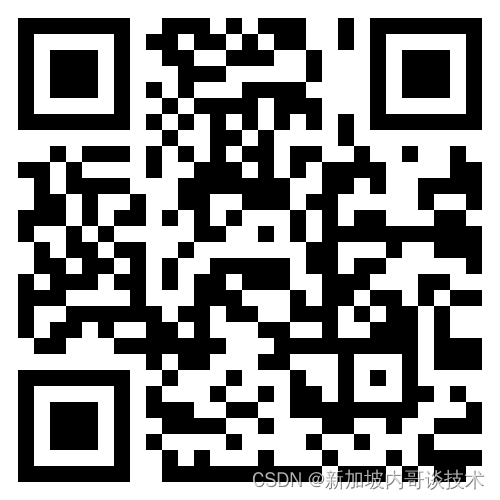一个朴实无华的目录
- 今日学习内容:
- 1.Swift 数组
- 1.1创建数组
- 1.2访问数组
- 1.3修改数组
- 使用 append() 方法或者赋值运算符 += 在数组末尾添加元素
- 通过索引修改数组元素的值:
- 1.4遍历数组 使用for-in循环
- 同时需要每个数据项的值和索引值
- 1.5合并数组
- 1.6count 属性
- 1.7isEmpty 属性
- 2.Swift 字典
- 2.1定义 :**存储无序的相同类型数据的集合**
- 2.2创建字典
- 2.3访问字典
- 2.4修改字典:使用 updateValue(forKey:) 返回Optional值。
- 2.5移除 Key-Value 对:removeValueForKey()
- 2.6遍历字典
- 2.7字典转换为数组
- 2.8使用只读的 count 属性来计算字典有多少个键值对:
今日学习内容:
1.Swift 数组
1.1创建数组
以下实例创建了一个类型为 Int ,数量为 3,初始值为 0 的空数组:
var someInts = [Int](repeating: 0, count: 3)
以下实例创建了含有三个元素的数组:
var someInts:[Int] = [10, 20, 30]
1.2访问数组
import Cocoa
var someInts = [Int](repeating: 10, count: 3)
var someVar = someInts[0]
print( "第一个元素的值 \(someVar!)" )
print( "第二个元素的值 \(someInts[1]!)" )
print( "第三个元素的值 \(someInts[2]!)" )
1.3修改数组
使用 append() 方法或者赋值运算符 += 在数组末尾添加元素
import Cocoa
var someInts = [Int]()
someInts.append(20)
someInts.append(30)
someInts += [40]
var someVar = someInts[0]
print( "第一个元素的值 \(someVar)" )
print( "第二个元素的值 \(someInts[1])" )
print( "第三个元素的值 \(someInts[2])" )
通过索引修改数组元素的值:
import Cocoa
var someInts = [Int]()
someInts.append(20)
someInts.append(30)
someInts += [40]
// 修改最后一个元素
someInts[2] = 50
var someVar = someInts[0]
print( "第一个元素的值 \(someVar)" )
print( "第二个元素的值 \(someInts[1])" )
print( "第三个元素的值 \(someInts[2])" )
1.4遍历数组 使用for-in循环
import Cocoa
var someStrs = [String]()
someStrs.append("Apple")
someStrs.append("Amazon")
someStrs.append("Runoob")
someStrs += ["Google"]
for item in someStrs {
print(item)
}
以上程序执行输出结果为:
Apple
Amazon
Runoob
Google
同时需要每个数据项的值和索引值
import Cocoa
var someStrs = [String]()
someStrs.append("Apple")
someStrs.append("Amazon")
someStrs.append("Runoob")
someStrs += ["Google"]
for (index, item) in someStrs.enumerated() {
print("在 index = \(index) 位置上的值为 \(item)")
}
以上程序执行输出结果为:
在 index = 0 位置上的值为 Apple
在 index = 1 位置上的值为 Amazon
在 index = 2 位置上的值为 Runoob
在 index = 3 位置上的值为 Google
1.5合并数组
import Cocoa
var intsA = [Int](repeating: 2, count:2)
var intsB = [Int](repeating: 1, count:3)
var intsC = intsA + intsB
for item in intsC {
print(item)
}
以上程序执行输出结果为:
2
2
1
1
1
1.6count 属性
import Cocoa
var intsA = [Int](count:2, repeatedValue: 2)
var intsB = [Int](count:3, repeatedValue: 1)
var intsC = intsA + intsB
print("intsA 元素个数为 \(intsA.count)")
print("intsB 元素个数为 \(intsB.count)")
print("intsC 元素个数为 \(intsC.count)")
以上程序执行输出结果为:
intsA 元素个数为 2
intsB 元素个数为 3
intsC 元素个数为 5
1.7isEmpty 属性
import Cocoa
var intsA = [Int](count:2, repeatedValue: 2)
var intsB = [Int](count:3, repeatedValue: 1)
var intsC = [Int]()
print("intsA.isEmpty = \(intsA.isEmpty)")
print("intsB.isEmpty = \(intsB.isEmpty)")
print("intsC.isEmpty = \(intsC.isEmpty)")
以上程序执行输出结果为:
intsA.isEmpty = false
intsB.isEmpty = false
intsC.isEmpty = true
2.Swift 字典
2.1定义 :存储无序的相同类型数据的集合
Swift 字典每个值(value)都关联唯一的键(key),键作为字典中的这个值数据的标识符。
2.2创建字典
var someDict = [Int: String]()
var someDict:[Int:String] = [1:"One", 2:"Two", 3:"Three"]
2.3访问字典
import Cocoa
var someDict:[Int:String] = [1:"One", 2:"Two", 3:"Three"]
var someVar = someDict[1]
print( "key = 1 的值为 \(someVar)" )
print( "key = 2 的值为 \(someDict[2])" )
print( "key = 3 的值为 \(someDict[3])" )
2.4修改字典:使用 updateValue(forKey:) 返回Optional值。
如果 key 不存在,则添加值,如果存在则修改 key 对应的值。
import Cocoa
var someDict:[Int:String] = [1:"One", 2:"Two", 3:"Three"]
var oldVal = someDict[1]
someDict[1] = "One 新的值"
var someVar = someDict[1]
print( "key = 1 旧的值 \(oldVal)" )
print( "key = 1 的值为 \(someVar)" )
print( "key = 2 的值为 \(someDict[2])" )
print( "key = 3 的值为 \(someDict[3])" )
以上程序执行输出结果为:
key = 1 旧的值 Optional("One")
key = 1 的值为 Optional("One 新的值")
key = 2 的值为 Optional("Two")
key = 3 的值为 Optional("Three")
2.5移除 Key-Value 对:removeValueForKey()
如果 key 存在该方法返回移除的值,如果不存在返回 nil 。
import Cocoa
var someDict:[Int:String] = [1:"One", 2:"Two", 3:"Three"]
var removedValue = someDict.removeValue(forKey: 2)
print( "key = 1 的值为 \(someDict[1])" )
print( "key = 2 的值为 \(someDict[2])" )
print( "key = 3 的值为 \(someDict[3])" )
也可以通过指定键的值为 nil 来移除 key-value(键-值)对
someDict[2] = nil
以上程序执行输出结果为:
key = 1 的值为 Optional("One")
key = 2 的值为 nil
key = 3 的值为 Optional("Three")
2.6遍历字典
import Cocoa
var someDict:[Int:String] = [1:"One", 2:"Two", 3:"Three"]
for (key, value) in someDict {
print("字典 key \(key) - 字典 value \(value)")
}
2.7字典转换为数组
import Cocoa
var someDict:[Int:String] = [1:"One", 2:"Two", 3:"Three"]
let dictKeys = [Int](someDict.keys)
let dictValues = [String](someDict.values)
print("输出字典的键(key)")
for (key) in dictKeys {
print("\(key)")
}
print("输出字典的值(value)")
for (value) in dictValues {
print("\(value)")
}
2.8使用只读的 count 属性来计算字典有多少个键值对:
import Cocoa
var someDict1:[Int:String] = [1:"One", 2:"Two", 3:"Three"]
var someDict2:[Int:String] = [4:"Four", 5:"Five"]
print("someDict1 含有 \(someDict1.count) 个键值对")
print("someDict2 含有 \(someDict2.count) 个键值对")
![[福游宝——AI智能旅游信息查询平台]全栈AI项目-阶段二:聊天咨询业务组件开发](https://i-blog.csdnimg.cn/img_convert/cbe7587980f70950e2eb46d9b7ebea77.png)

















